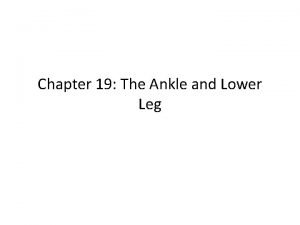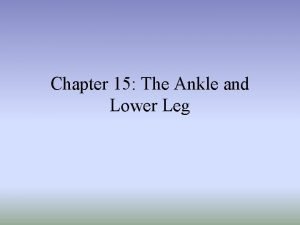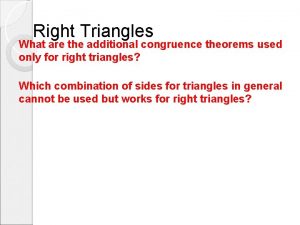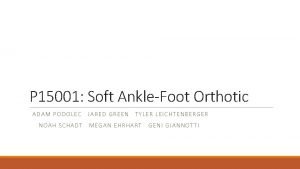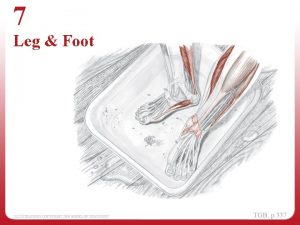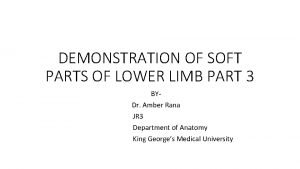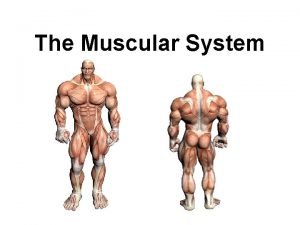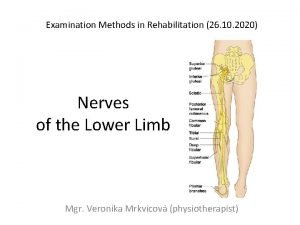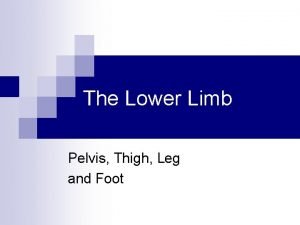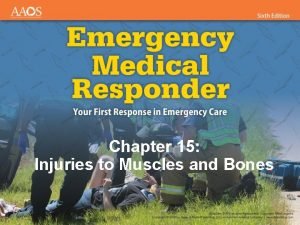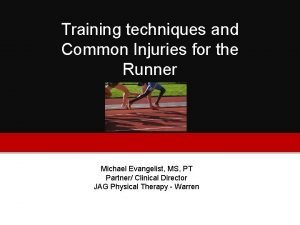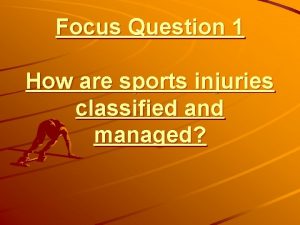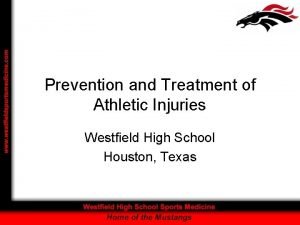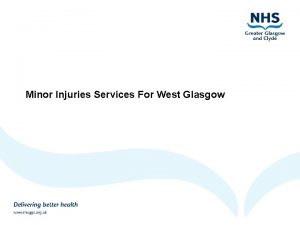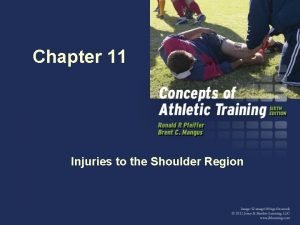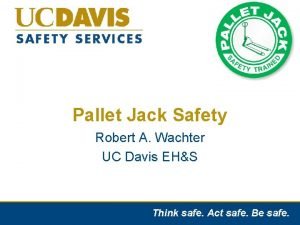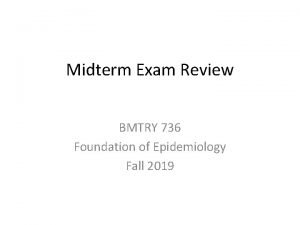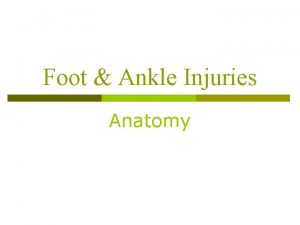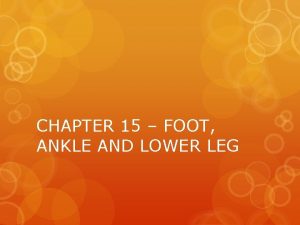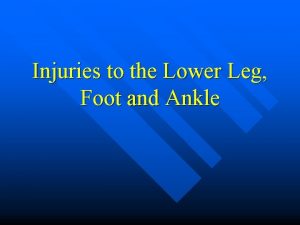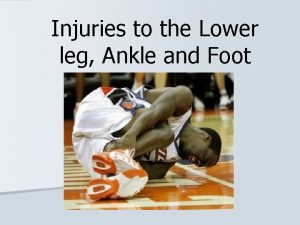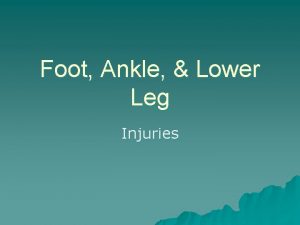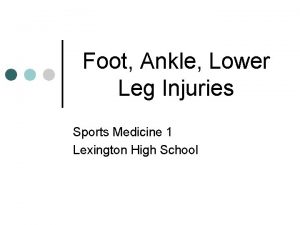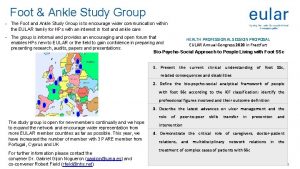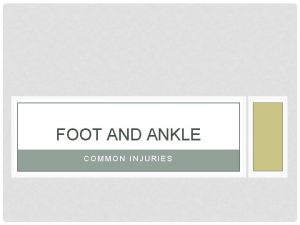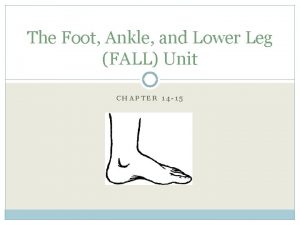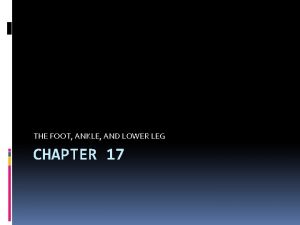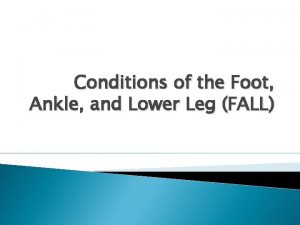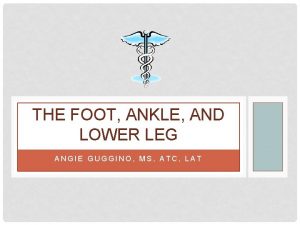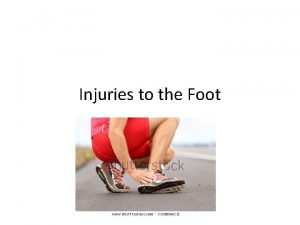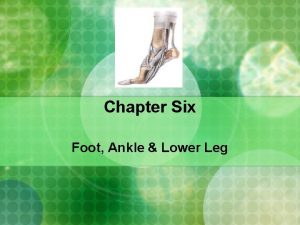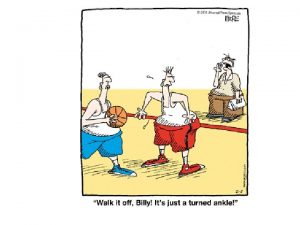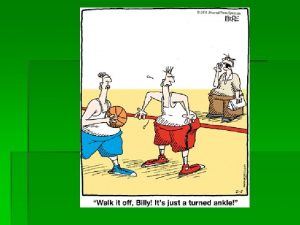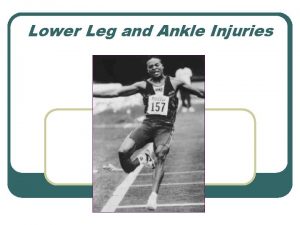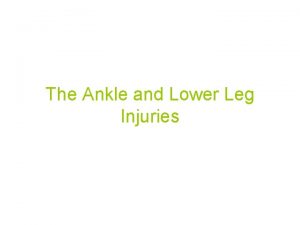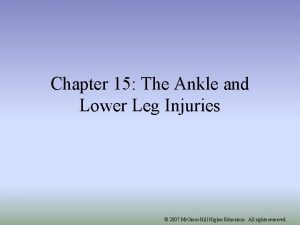Injuries to the Lower Leg Foot and Ankle






































- Slides: 38

Injuries to the Lower Leg, Foot and Ankle

Lower Leg Injuries Caution! Graphic Picture


Contusions n Shin contusion


Compartment Syndrome

n

Fasciotomy – surgical procedure in which the fascia is cut to relieve pressure http: //www. youtube. com/watch? v=82 Qcxd. Hel 0 Q

Muscle Strain n Calf is most affected (usually at gastroc-achilles junction)

n Grade 1 Calf Strain: n Grade 2 Calf Strain : n Grade 3 Calf Strain:

Achilles Tendonitis n Inflammation of the Achilles Tendon n MOI – overuse, microtearing of tendon

Achilles Tendon Tear n

n

Thompson’s test for Achilles Tendon Rupture http: //www. youtube. com/watch? v=8 kx. PFj. SJj 0 k

Muscle Spasm n Calf usually affected n MOI – fatigue, dehydration n Treatment – direct compression, gradual stretch, ice, rehydrate

Leg Fractures n. Direct blows or indirect trauma




Stress Fractures An incomplete break in a bone occurring after prolonged repetitive exercise

Stress Fractures (con’t) n Signs and Symptoms -



Medial Tibial Stress Syndrome n “shinsplints” n Pain along medial border of the tibia n Usually with novice runners – well conditioned runners usually due to mechanical abnormalities

n Causes: - running on hard surfaces - Overuse - Muscle imbalance - Tight Achilles

n

Ankle Injuries

Mechanisms of Injuries n Inversion -

n Plantar Flexion - Usually sprain ankle when in plantar flexion. - Ankle is unstable in this position

n Eversion - usually due to a planted foot that receives a lateral force - stepping in a hole - higher incidence of fractures

Lateral Ligament Sprain n Most common ankle injury n MOI = Inversion and plantar flexion

n Anterior Talofibular Ligament (ATF) is injured first. (mild sprain) n The Calcaneofibular Ligament (CF) is injured in more severe sprains

INVERSION ANKLE SPRAIN n n

Ankle inversion http: //www. youtube. com/watch? v=d. P 17 ZY 3 zxa 4&feature=related http: //www. youtube. com/watch? v=8 Kc 1 CEAk 1 ao&feature=fvwrel n

Medial Ligament Sprain (Deltoid Ligament) n Often associated with fractures of lateral malleolus

The Deltoid Ligament n

Peroneal Tendon Injury n Can occur when lateral ankle ligaments are injured

 Chapter 19 worksheet the ankle and lower leg
Chapter 19 worksheet the ankle and lower leg Chapter 15 the ankle and lower leg
Chapter 15 the ankle and lower leg Anatomy and physiology of the foot
Anatomy and physiology of the foot Hl theorem examples
Hl theorem examples Ankle foot orthoses
Ankle foot orthoses Foot orthosis project
Foot orthosis project Foot topography
Foot topography Saphenous vein anatomy
Saphenous vein anatomy Parts of lower leg
Parts of lower leg Termination of femoral artery
Termination of femoral artery Adducts arm
Adducts arm Extensors leg
Extensors leg Lymph nodes in lower leg
Lymph nodes in lower leg Plexopathy
Plexopathy Thigh innervation
Thigh innervation Put your left foot in
Put your left foot in Solving right triangles
Solving right triangles Unit 15:1 providing first aid
Unit 15:1 providing first aid A short backboard or vest-style immobilization
A short backboard or vest-style immobilization Chapter 21 caring for head and spine injuries
Chapter 21 caring for head and spine injuries Emr chapter 15 injuries to muscles and bones
Emr chapter 15 injuries to muscles and bones Chapter 14:3 observing fire safety
Chapter 14:3 observing fire safety Jones and bartlett learning
Jones and bartlett learning Chapter 13:2 preventing accidents and injuries
Chapter 13:2 preventing accidents and injuries Chapter 11 assessment and evaluation of sports injuries
Chapter 11 assessment and evaluation of sports injuries Chapter 12 lesson 3 planning a personal activity program
Chapter 12 lesson 3 planning a personal activity program Common track injuries
Common track injuries How are sports injuries classified and managed
How are sports injuries classified and managed Beck weathers helicopter rescue
Beck weathers helicopter rescue What is katniss’ prediction as she readies herself?
What is katniss’ prediction as she readies herself? Strickler spine and sport
Strickler spine and sport Westfield sports injuries
Westfield sports injuries Stobhill miu
Stobhill miu Human crutch
Human crutch Chapter 17.11 providing first aid for sudden illness
Chapter 17.11 providing first aid for sudden illness Chapter 11 injuries to the shoulder region
Chapter 11 injuries to the shoulder region Kristen wilson injuries
Kristen wilson injuries Pallet jack injuries
Pallet jack injuries An epidemiologic survey of roller skating injuries
An epidemiologic survey of roller skating injuries
